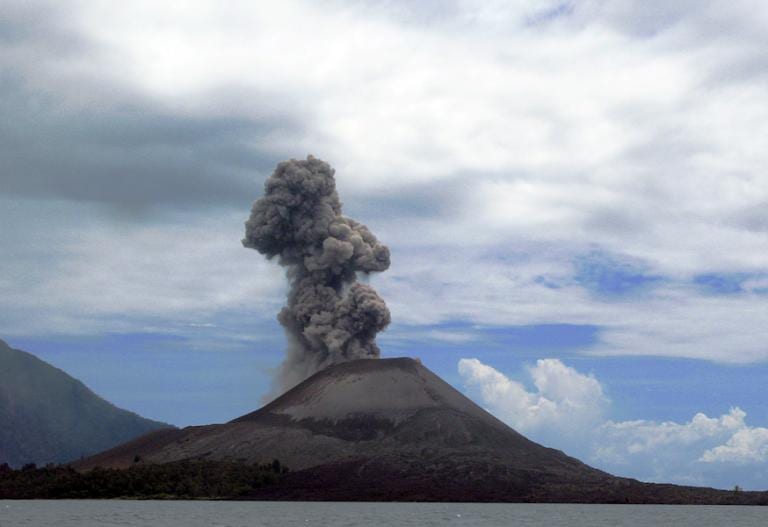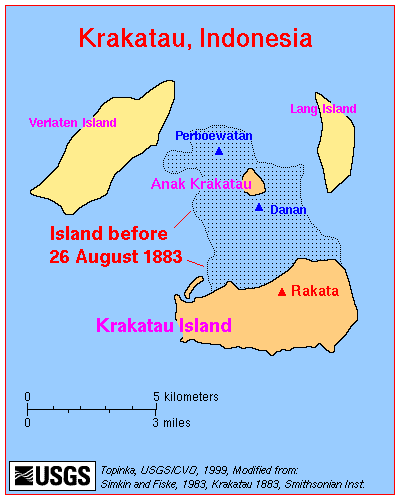
(Wikimedia Commons public domain photograph)
Here are some of my final notes from Bart J. Kowallis, “In the Thirty and Fourth Year: A Geologist’s View of the Great Destruction in 3 Nephi,” BYU Studies 37/3 (1997-1998):
The most detailed accounts of “thick darkness” accompanying an explosive volcanic eruption come from the vicinity of Krakatoa, in August 1883. This passage, for instance, comes from a report from the first officer of the ship W. H. Besse regarding 26 August of that year:
[T]he sky was intensely dark. . . . [I]t had gradually been growing dark since 9 A.M. and by the time the squall struck us, it was darker than any night I ever saw; this was midnight at noon, a heavy shower of ashes came with the squall, the air being so thick it was difficult to breathe, also noticed a strong smell of sulphur, all hands expecting to be suffocated; the terrible noises from the volcano, the sky filled with forked lightning, running in all directions and making the darkness more intense than ever; the howling of the wind through the rigging formed one of the wildest and most awful scenes imaginable, one that will never be forgotten by anyone on board, all expecting that the last days of the earth had come. (178)
Another witness of the eruption of Krakatoa recalled that he and his associates were “inclosed in a darkness that might almost be felt,” and that “at noon the darkness was so intense that we had to grope our way about the decks [of the ship]” (178).

A Mrs. Beyerinck, who lived with her family about fifteen miles from the island where Krakatoa was located, described (among other things) their difficulty in lighting a fire, which is reminiscent of the report given in 3 Nephi:
Someone burst in shouting ‘shut the doors, shut the doors.’ Suddenly it was pitch dark. The last thing I saw was the ash being pushed up through the cracks in the floorboards, like a fountain . . .
There was still deep darkness. We couldn’t light a fire, as matches went out immediately. At last the head boy, the only remaining male servant, managed to start a small fire. (179)
Professor Kowallis comments that, although we don’t know how Nephites ordinarily kindled fires, it likely required skill and patience and would not have been easy under tempestuous winds and a heavy fall of ash. He further remarks that
Not only will the ashfall extinguish fires, but the gases erupted from a volcano can have the same effect. These gases are usually heavier than normal atmospheric gases, are very poor in oxygen, and commonly create acids in the atmosphere. These gases would also prevent the lighting of fires, but seldom is anyone alive to make the attempt, as the gases tend to quickly suffocate or poison those who are unfortunate enough to be caught under the blanket. In 1986, an unusual release of CO2 from a volcanic lake, Lake Nyos in Cameroon, created a dense near-surface cloud that flowed down and over several villages, asphyxiating 1,746 people and eighty-three hundred livestock. In the village of Nyos, less than 1 percent of the villagers survived. Asphyxiation was also a common cause of death during the 1911 eruption of the Taal volcano in the Philippines. (179)
And Dr. Kowallis closes his discussion of 3 Nephi’s “thick darkness” with a report from one of the two survivors from the city of St. Pierre on the island of Martinique after the eruption of Mount Pelée. This witness saw several people suffocate around him.











